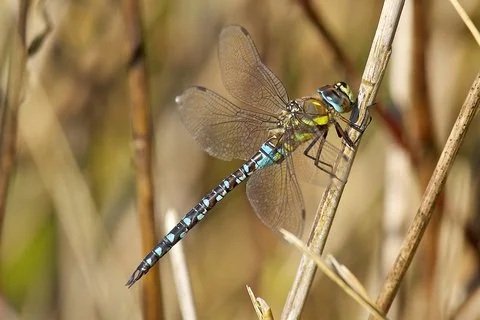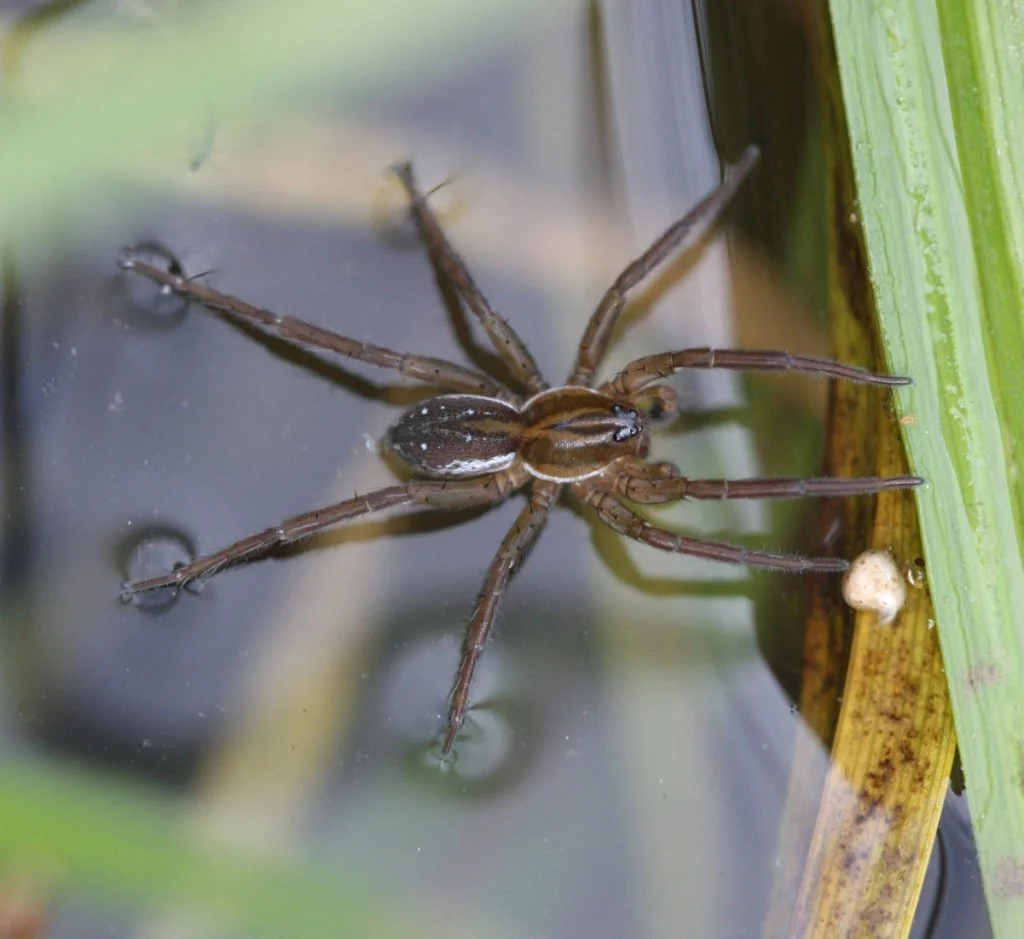
Invertebrates
How does peatland restoration assist invertebrates?
Upland invertebrates on the Isle of Man play a vital role in peatland ecosystems, which are rich in biodiversity but increasingly under threat.
Peatlands provide the damp, acidic conditions essential for many invertebrate species, particularly craneflies, whose eggs and larvae depend on high moisture levels. However, the decline of key peat-forming plants—such as Sphagnum moss—leads to habitat degradation and drying. This not only reduces suitable breeding conditions but also increases the risk of drought and wildfires, threatening entire invertebrate communities.
Restoration efforts directly benefit invertebrates by:
Improving moisture retention through rewetting and moss regeneration.
Enhancing vegetation cover, which provides shelter and food sources.
Increasing habitat connectivity, allowing species to move and recolonise restored areas.
By restoring hydrology and vegetation structure, peatland restoration helps rebuild resilient invertebrate populations, which in turn support wider biodiversity and ecosystem health.
Pollinators in the Manx hills
Uplands host specialist plant communities like heather, blaeberry, carnivorous sundew, and sphagnum moss—these are adapted to acidic, nutrient-poor peatland conditions. Blaeberry and heather, in particular, are rich in nectar sources during late spring and summer. The uplands support a diversity of pollinators, including bumblebees, solitary bees, butterflies, moths and hoverflies. These are active in upland meadows and heath, supporting plant reproduction. Restoration efforts revitalise peatlands, supporting plant diversity essential for pollinators and the wider upland ecosystem.
There are many species of dragonflies found on the Isle of Man, which are closely linked to the health of upland , heathland and peatland pool ecosystems. Species include darters, hawkers, chasers, skimmers and more. Small water bodies like shallow upland pools are critical for breeding and development. Dragonfly larvae develop in calm, nutrient-poor water often found across peatland habitats. heathland vegetation serves as hunting grounds and perch sites for adult dragonflies. Restoration work, by creating pools of varying sizes and depths, boosts colonisation and presence of species such as the common hawker.
Black darter and common hawker are peatland‑specialist species noted to have sharp declines corresponding with the degradation of healthy blanket bog habitats. Flooded gravel pits provide refuge for many dragonfly species, including black-tailed skimmers, four-spotted chasers, downy emerald and emperor. While not dependent on peatland features, they can utilise restored upland pools as viable breeding sites. Four-spotted chasers thrive in acidic waters, abundant in submerged and emergent plants, which provide perching spots and larvae shelter. Downy emerald dragonflies enjoy the same vegetated water bodies, particularly in sheltered upland pools, often from woodland borders. Emperor dragonflies require aquatic vegetation too, so before the dredging and removal of pondweeds, check for egg-laying and larval development.
When in the larval stage as nymphs, they hunt aquatic insect larvae, water fleas, tadpoles and often other dragonfly larvae. Adult dragonflies patrol heathland edges and bog pools, catching prey mid-air using their legs to form a basket while flying. At speed they catch mosquitoes, moths, butterflies and smaller flies.
Dragonflies

Black-tailed Skimmer

Four-Spotted Chaser

Downy Emerald

Black Darter

Emperor

Migrant Hawker
Moths and Butterflies
Heathland and peatland vegetation provides height and diversity in plant age and structure, important for shelter, feeding, and breeding. This habitat diversity supports different life stages—from caterpillar to adult—by supplying necessary microhabitats. Butterflies and moths act as sensitive bioindicators, reflecting the success of peatland restoration in maintaining ecosystem health and resilience.
While we don’t have any peatland specialist moths or butterflies, such as large heath butterflies, on the Island, there are several species that can be found in upland habitats. These include emperor moth, dark green fritillary, small heath, knot grass moth, fox moth and Manchester treble-bar.

Emperor Moth Caterpillar

Emperor Moth

Small heath butterfly

Large heath butterfly

Knot grass moth

Knot grass moth caterpillar

Fox moth caterpillar

Fox moth

Dark green fritillary
Beetles and spiders
Upland peatlands feature a mosaic of pools, hummocks, wet flushes, and fen areas. Each micro-habitat caters to different spider and beetle groups: ground and rove beetles may thrive in hummocks or damp margins. Wet-adapted species such as the great diving Beetle (bottom-left) and pirate wolf spider (top-left) inhabit pools and sedge-rich flushes. Peatlands accumulate vast amounts of partly decomposed plant matter (peat), creating detritus-rich layers. Numerous beetles feed on this organic matter or the fungi and microfauna that thrive within it—supporting a vital decomposer food web.
Species such as the green tiger beetle (top-right) thrive in upland heathland habitats where a mosaic of vegetation provides both open ground and cover.
Open areas created by controlled sheep grazing offer ideal hunting and basking sites for fast-moving beetles, while denser patches of heather and sphagnum moss provide shelter and humidity for other ground and rove species.
Many peatland beetle and spider species are extremely sensitive to environmental change, making them valuable bioindicators for monitoring peatland health and restoration progress. The rich invertebrate life in peatlands—such as tiny flies, springtails, and other arthropods—provides abundant prey for both active predators (e.g., wolf spiders) and sit-and-wait web-builders. Species such as wolf spiders and raft spiders (bottom-right) have water-repellent (hydrophobic) legs to walk on water and are capable of submergence to avoid predators.
Damselflies
Damselflies are an indicator species for environmental quality. Their larvae are fully aquatic and thrive in clean, bog pools, making them direct indicators of healthy peatland hydrology.
Larvae help regulate aquatic invertebrate populations, and adults provide prey for small upland birds such as meadow pipits.
Where the Manx Peat Partnership has created wet scrapes to mimic the naturally occurring wet flushes and shallow pools, you will find damselflies. Our work to rewet our peatlands aims to raise the water table and recreate these open water bodies, especially in degraded peatlands where drainage has dried them out.
Craneflies and their relationship with upland habitats
Craneflies play two important ecological roles: food source and indicator species.
Cranefly larvae (known as leatherjackets) thrive in moist, peaty soil. Their presence signals that the peatland is functioning well - wet and biologically active. They also serve as a food source for many upland species, including reptiles such as common lizards, and ground-nesting upland birds such as curlew, hen harrier, grouse, skylark and snipe. These birds rely on craneflies, especially during breeding seasons when protein-rich prey is essential for chicks.
Most people come face to face with the most common “daddy-long-legs” species Tipula paludosa when it flies into houses during late summer and autumn, when attracted to lights around or inside the house.











